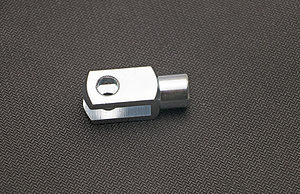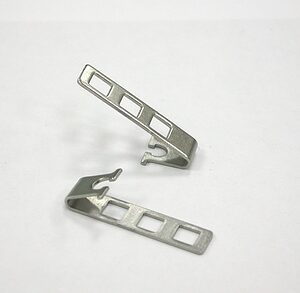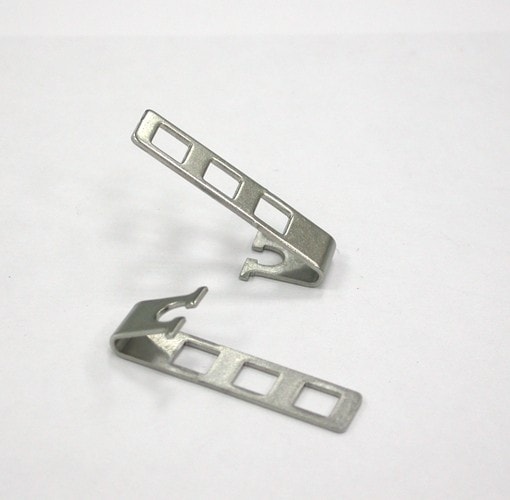目錄大綱
- 1 What are the requirements for metal part design?
- 2 What factors should be considered?
- 3 What mold design and manufacturing processes are available?
- 4 How can I ensure the accuracy of my mold design?
- 5 What considerations should I take into account when evaluating a stamping die design?
- 6 Tips for ensuring a successful mold production process
- 7 Conclusion
When it comes to designing and engineering metal parts, there are several key factors to consider. The size of the part, the material it will be made from, and the manufacturing processes required—these are all important elements to take into account.
However, one of the most crucial aspects of metal parts design is ensuring that the part will fit its intended purpose. In other words, you need to make sure that the part will function as expected and withstand the anticipated loads and stresses.
This can be a daunting task, but with a bit of creativity and careful planning, you can create a part that is not only effective but also aesthetically pleasing. So, what should you keep in mind when designing a metal part? Let’s take a closer look.

(This image is for illustration purposes)
What are the requirements for metal part design?
When designing metal parts, there are several key considerations to keep in mind:
- The part’s design must be manufacturable. It needs to be easy to produce, with simple and consistent steps that can be easily repeated.
- The part must be designed for its function. It should perform its intended function without interference or unexpected issues.
- The part’s design must be durable. It needs to withstand continuous use and wear without degrading.
- The part must be visually appealing. It should look good, not just function well.
What factors should be considered?
When designing any kind of tool, there are several basic factors to keep in mind. Here are a few of the most important considerations:
- The part’s function. What is this part supposed to do? How does it work?
- The part’s operating environment. What conditions will it be exposed to? Extreme temperatures, corrosive chemicals, etc.
- The part’s material. Some materials are more difficult to process or more expensive than others.
Of course, there are many other factors that may come into play depending on the specific application. But if you focus on these three points, you’ll be able to design a part that performs well and lasts for many years.

(This image is for illustration purposes)
What mold design and manufacturing processes are available?
When designing and producing metal parts, there are many different mold design and manufacturing processes to choose from. Some of the more common processes include:
- Casting: This process uses a mold to create a replica of the desired part. The mold is filled with molten metal or alloy and then allowed to harden, forming a finished part.
- Stamping: In stamping, a metal sheet is forced into a mold to create a finished part. The molds can be made from various materials, including steel, brass, or aluminum, and can be customized to create the shape and size required for the final part.
Each of these processes has its own advantages and disadvantages, so it is important to choose the right process for your application.
How can I ensure the accuracy of my mold design?
When it comes to designing the perfect fit for your metal parts, accuracy is key. Here are a few simple steps you can follow to ensure you design the right mold:
- Use a 3D CAD system to model your mold and carefully review every step of the process.
- Test the tool in a lab environment first and gather feedback from your team members.
- Test under different conditions and environments to account for any potential wear and tear on the tool.
- Consider adding safety features such as emergency stop buttons or additional protective components.
- Calibrate the tool and monitor its performance over time.
Following these tips will help ensure you create a reliable, accurate, and efficient tool design that stands up to wear and tear and delivers consistent results for years to come.
What considerations should I take into account when evaluating a stamping die design?
When evaluating a stamping die design, there are several factors to consider. First and foremost, you need to ensure that the parts produced by the die will be accurate. This is especially important when it comes to parts that require precise tolerances or complex shapes. Additionally, you should evaluate the performance of the mold in terms of efficiency and cost-effectiveness. This includes considering how much time and money will be required to maintain the mold over its expected lifespan.
The strength of the material should also be assessed. Considering the existing load capacity, temperature fluctuations, and other environmental factors can help determine whether certain materials will better meet your needs. Similarly, analysis should be performed to ensure the parts can withstand external forces, such as vibrations or impacts during system assembly or operation. Finally, depending on your needs, you might want to review additional features, such as adjustability or custom features designed for your specific application.
Tips for ensuring a successful mold production process
To ensure success in the mold production process, it is important to take your time. Understand that the process may be lengthy and intricate, but planning each step carefully is crucial for successful production. Here are some tips:
- Find the right materials for the job. The choice of injection molding materials will affect the mold design, so it is important to understand the capabilities of each material.
- Make sure you are fully prepared with all the components before starting mold production. This includes parts like slider cores, internal cooling channels, and other components that may require special mold features or operations.
- Test the tool on a small scale first. Before large-scale production, test the mold on sample products to ensure accuracy and quality. This will help identify potential issues and allow you to solve them before they become major problems in the production process.
- Invest in quality assurance checks throughout the process. Quality assurance should be conducted during conceptualization, design, prototyping, and post-production, as well as on each finished part to ensure everything meets expectations.
Conclusion
So, what are the basic principles of mold design? To design a mold that consistently produces perfect metal parts, there are a few key points to remember. Especially with mold design, which is a critical part of the mold manufacturing process, it is important to get it right.
Not only do you need to consider the shape and size of the part you’re trying to create, but also the manufacturing process. When it comes to producing high-quality parts, the right mold can make all the difference. Baixiang Metal Processing Factory is committed to continuous technological improvement and product innovation, with extensive experience in professional metal processing design and development. The company also incorporates automated processes and the latest technology to provide the best service to customers.

